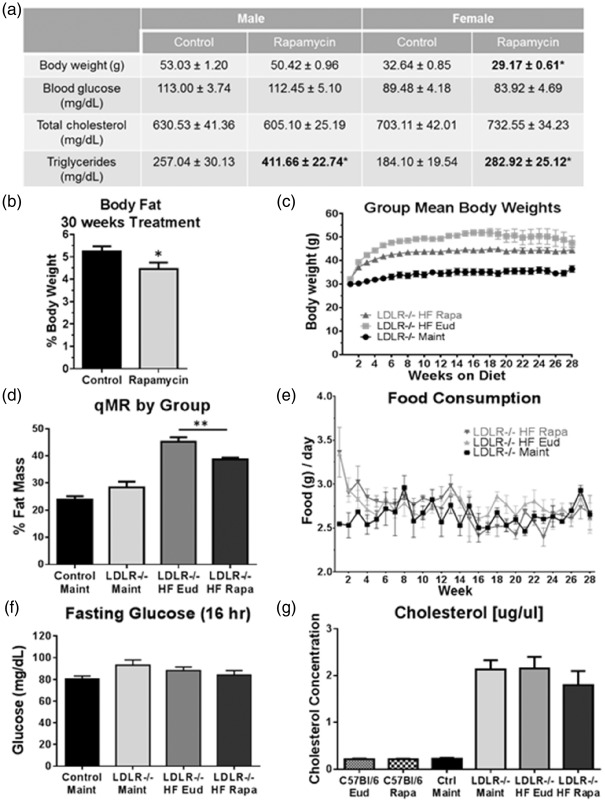Figure 2.
Chronic mTOR attenuation reduces body weight and fat mass gains in HFD-fed LDLR−/− mice. (a) Decreased body weight despite a significant increase in blood triglycerides without changes in glucose or cholesterol in rapamycin-treated HFD-fed LDLR−/− mice of Cohort 1; (b) Reduced body fat in rapamycin-treated HFD-fed LDLR−/− mice of Cohort 1 (*, p = 0.0465, Student’s unpaired t test); (c) Weight gain in Cohort 4 HFD- two-way ANOVA); (d) Reduced body fat in rapamycin-treated LDLR−/− mice of Cohort 4 (**, F(3, 42) = 38.54, p < 0.0001, Tukey’s test on a significant effect of treatment, one-way ANOVA); No differences in food consumption (e) or fasting glucose (f) levels were observed among experimental groups; (g) Significant increases in blood cholesterol following HFD feeding in Cohort 4 were unaffected by rapamycin treatment. n = 11–15/group (males) and n = 13–16/group (females) for (a–b) and n = 10/group (c–f). Data are means ± SEM.

